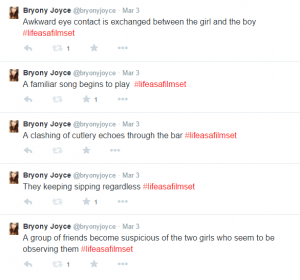Ok, so I know the idea of feminism has been done to death, however there is generally little place for it in religion. Most societies in the past were patriarchal, and some still are. Because of this, I thought about examining the relationship between religion and feminism by proposing a fascist society, run by a women. Think Iron Lady ruling in Stalin’s Russia (which I realise was communist, but it’s the public terror I’m trying to replicate). My symbol reflects this.
Without further delay, my 5 rules are:
Enforced curfew; not very imaginative, but realistic I feel. V for Vendetta style, with military patrol.
No Freedom Of Speech; again pretty standard, but control of the media leads to control of the public. Even today in North Korea.
Making homosexuality illegal; Not my views I’d like to point out, but this is a religious faction, derived from Christianity, with Mary Magdelene as the figurehead instead of Jesus. The denial of homosexuality has been synonymous with Christianity for century’s.
Sex Before Marriage Punishable by Death; On the same thought trail as above, keeping with puristic Christian views. Discouraging promiscuity.
General Sexism; This isn’t a rule as such, but a collection. Like Jim Crow laws used in South America to encourage racial segregation, these encourage gender segregation. Men are paid less, the law tends to side with women, men often get blamed for womens crimes etc. Not necessarily segregation physically, but in every other sense of the word. Maybe even revoking mens right to vote.
Also my symbol is feminism with Jesus on the Cross. Not only because Jesus is the symbol of Christianity, but because the think Jesus is weak for dying and he is weak because he is a man. They’re pretty sexist. I’m not.


